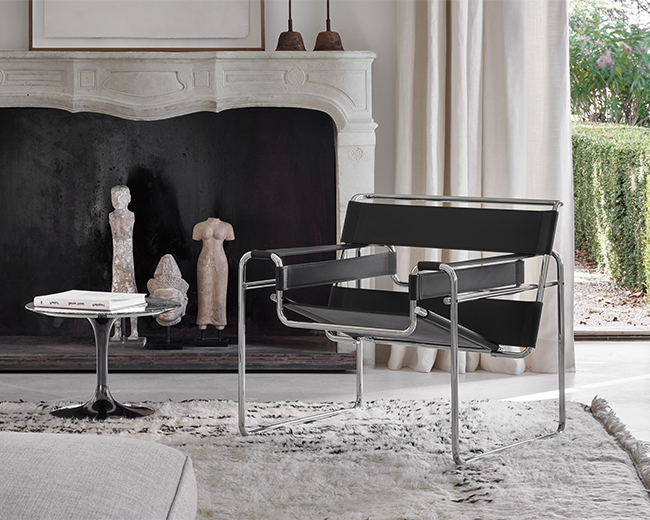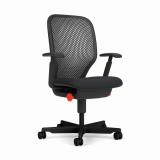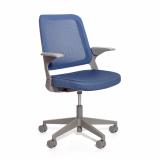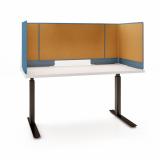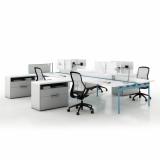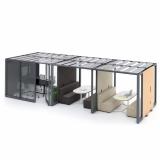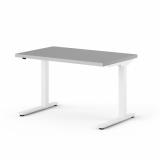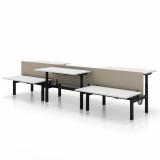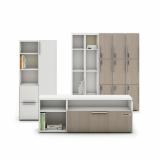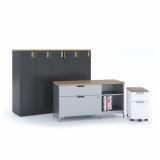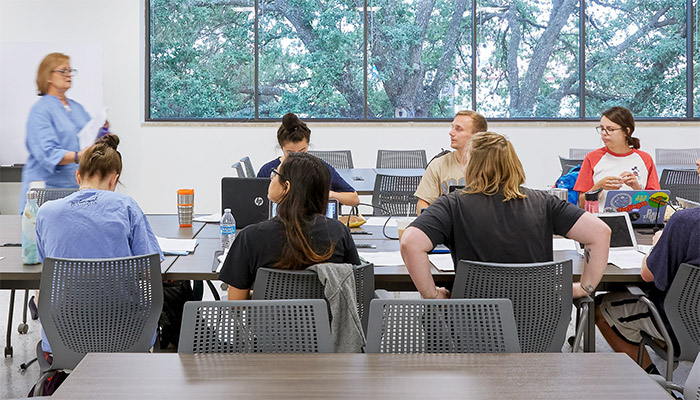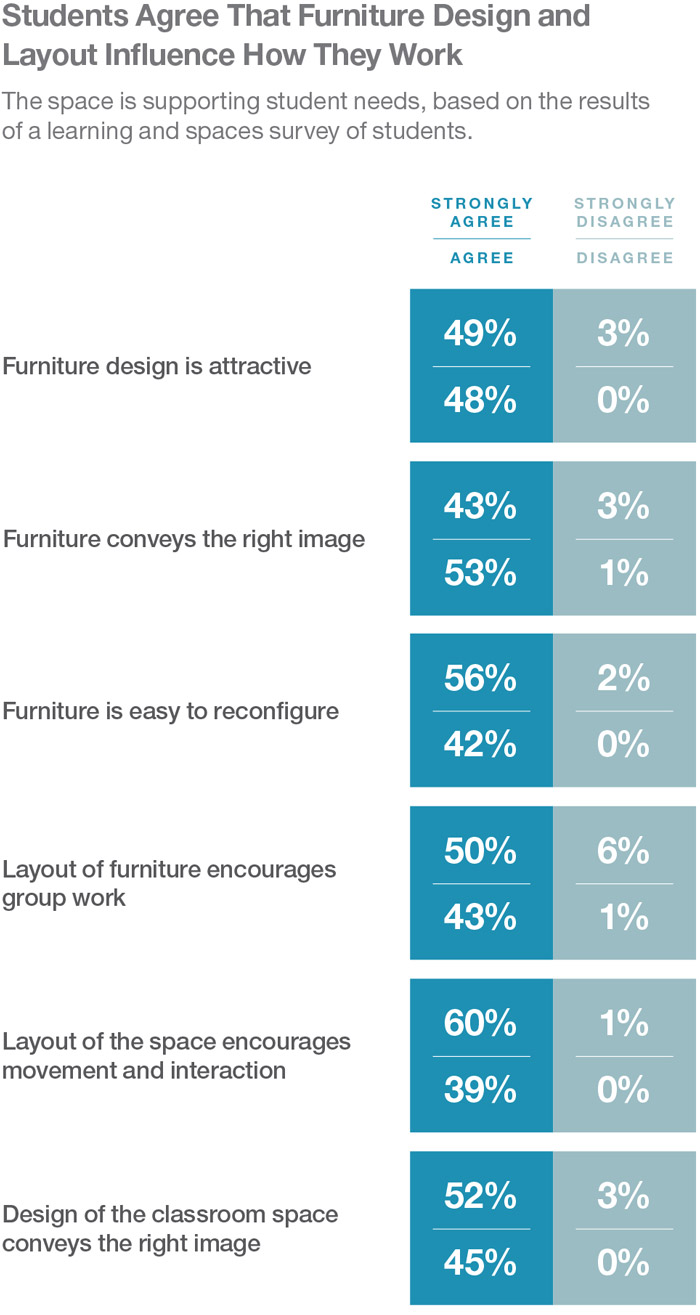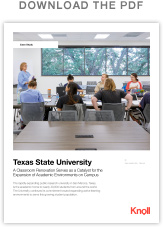
The rapidly expanding public research university in San Marcos, Texas, is the academic home to nearly 40,000 students from around the world. The University continues its commitment toward expanding active learning environments to serve this growing student population.
Located in Jowers Center, which houses the Department of Health and Human Performance (HHP), the 1,100-sq.-ft. classroom had been scheduled to undergo a standard refresh that involved repainting, replacement of desks, and other cosmetic enhancements. But the current and previous department chairs had a more ambitious vision for the space. They jointly developed a proposal to transform the classroom into a flexible active learning environment. They also recommended and committed to investing in specialized training to help faculty effectively implement active learning experiences in their classes.
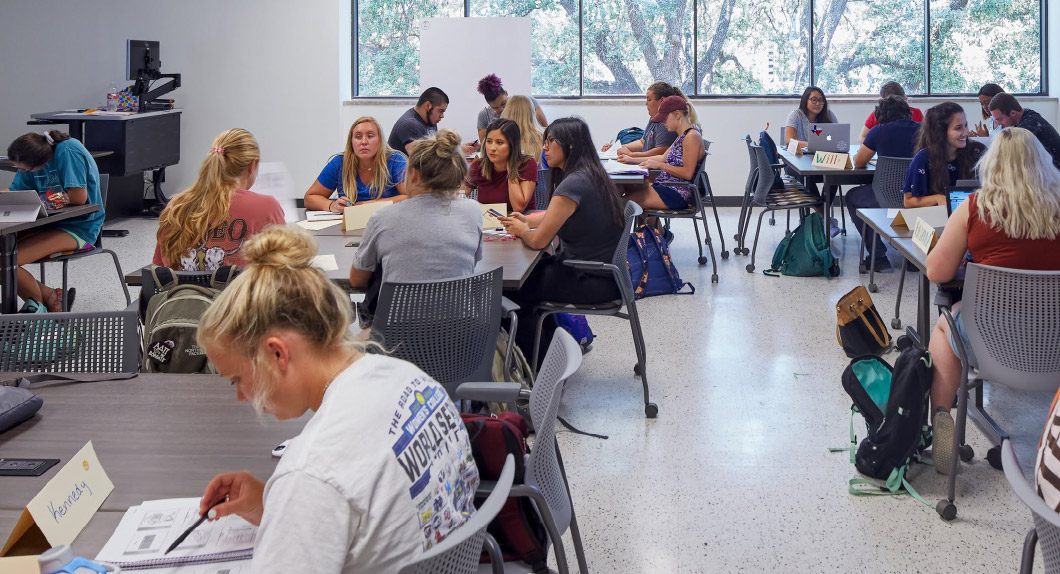
Easily adaptable, Pixel tables and MultiGeneration by Knoll chairs on casters support a range of classroom layouts and activities.
The university approved the enhanced renovation proposal and moved forward with classroom updates that included new lighting, blinds, electrical outlets, an additional projector, movable white boards and mobile tables and desks with integrated power and USB ports. “For the last 20 years, the research is very clear: when you engage students in the learning process, they retain more information, develop critical thinking and problem-solving skills, and are better prepared for collaborative teamwork in their professional lives,” says Karen Meaney, Ed.D., professor and chair of the Department of Health and Human Performance at Texas State University.
Meaney worked closely with previous department chair Duane Knudson, Ph.D., FACSM, FISBS, FRSA, in recommending a low-tech active learning classroom, which research has revealed can be an equally effective learning environment as a high-tech classroom. “We encouraged the university to invest in a lower-tech classroom that wouldn’t require built-in computers,” Knudson says. “Students often have advanced phones and tablets that can handle the technology-rich instruction techniques used by some of our faculty.” The department also has several mobile laptop computer carts that faculty can integrate into their classroom instruction.
A Flexible, Resilient Environment
Flexibility was a primary goal for the renovation, as the facility has to accommodate a range of undergraduate and graduate courses within the athletic training, exercise and sport sciences, health education and recreation programs. “This interdisciplinary classroom is used constantly throughout the day, so it needs to be able to quickly adapt to meet the needs of each class,” Meaney says. Texas State opted to replace the classroom’s existing lecture-style desks and chairs with Pixel™ tables and MultiGeneration by Knoll® chairs on casters that can be adapted to support a range of traditional classroom layouts, small group activities and interactive exercises.
“The system allows faculty and students to efficiently reconfigure the room based on the activities happening in class that day,” says Carol Crane, Vice President, Education at Knoll. “It supports a more personalized, hands-on way of learning that allows students to interact and work collaboratively and cooperatively in small groups.”
Quality and durability were another high priority to ensure the classroom could adapt with the university for many years to come. “The molded urethane edge of the Pixel table is permanently fused to the substrate, so it won’t crack or peel, and is easy to clean,” says Knoll Sales Representative Autumn Van Treeck. “The tables’ soft edges also limit damage to walls or furniture from unintended collisions that may occur as the tables are moved around to reconfigure the room.”
Equipping Faculty for Success
A key component of Meaney’s and Knudson’s proposal involved equipping faculty with effective instructional techniques for collaborative, team-based learning environments.“The teaching experience in an active classroom is a lot different from a traditional classroom environment,” Meaney says. “Instead of standing at the front of the classroom, instructors move from table to table and interact in a much more direct way with students. They have to be willing to give up some control and let students really explore and dialogue among themselves to come up with solutions.”
Fifteen faculty members from four different academic disciplines within the department completed a three-part professional development workshop series led by Diane Boyd, director of the Biggio Center for the Enhancement of Teaching and Learning at Auburn University. Prior to completing the training, 27% of faculty “strongly agreed” that they were confident in their skill to effectively teach in the renovated learning space. This confidence level increased to 53% following the training. And 71% strongly agreed that they would participate in additional training in active learning.
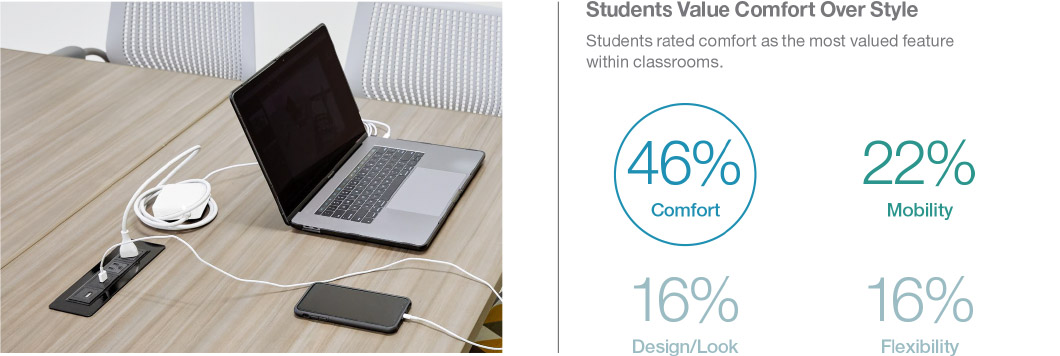
Students enjoy the ability to easily connect and plug in their devices at their tables.
“I think the classroom has worked so well because we invested in faculty training to ensure it is used the way it was intended.” Knudson says. Since completing the training, several faculty members have been invited by the Associate Vice President for Academic Affairs to serve on a new university committee charged with developing guidelines and policies for active learning and collaborative classrooms and the committee selecting a new learning management system.
Serving Student Needs
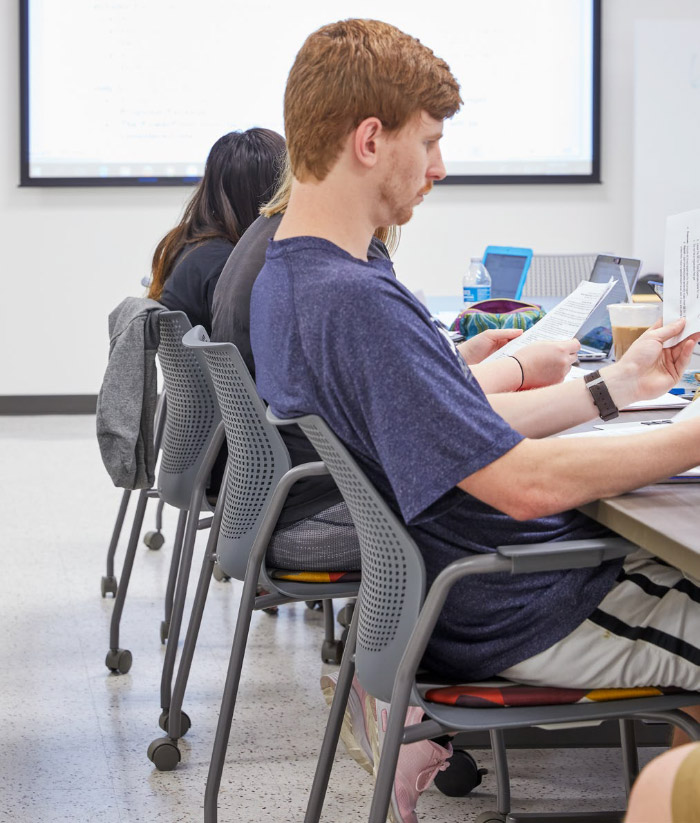
Students appreciate the comfort and mobility of the MultiGeneration by Knoll chairs in the classroom, allowing them to create a space where they feel more engaged and better prepared for collaborative teamwork.
The space is also being embraced by students, based on the results of a learning and spaces survey of 416 students conducted across 19 classes. More than 98% of respondents “strongly agreed” or “agreed” that the overall layout of the space makes it easy to move about the room and interact with others. And more than 97% of them “strongly agreed” or “agreed” that the furniture is easy to move and reconfigure. The ganging system that connects the Pixel tables is built in, intuitive and doesn’t require tools to operate. “The students love the whole room,” Meaney says. “It’s bright and inviting, and students love the furniture and the ability to plug in at their tables.”
Texas State also conducted student and faculty focus groups to gather additional insights into how well the room is meeting the needs of its occupants. Preliminary results from student focus groups indicated learners appreciated the comfort and mobility of the MultiGeneration by Knoll chairs and the convenience of electrical outlets to charge their devices, but found the dual screens difficult to view from some seats. And faculty appreciated the wheeled white boards and dual screens as well as the ability to create various table layouts; but sometimes felt constrained by time and reported not changing the layout as often as intended. The university is currently expanding its commitment to active learning by creating active learning classrooms in several other departments, including the School of Family and Consumer Sciences and College of Science and Engineering.
“We appreciate Knoll’s partnership because we’ve found the furniture to be high-quality, attractive, easy to move, and effective,” says Knudson. “Anything that helps our students learn better also helps make our alumni more successful and increases the overall status of the university, so it’s a win-win-win.”
Download the Case Study




